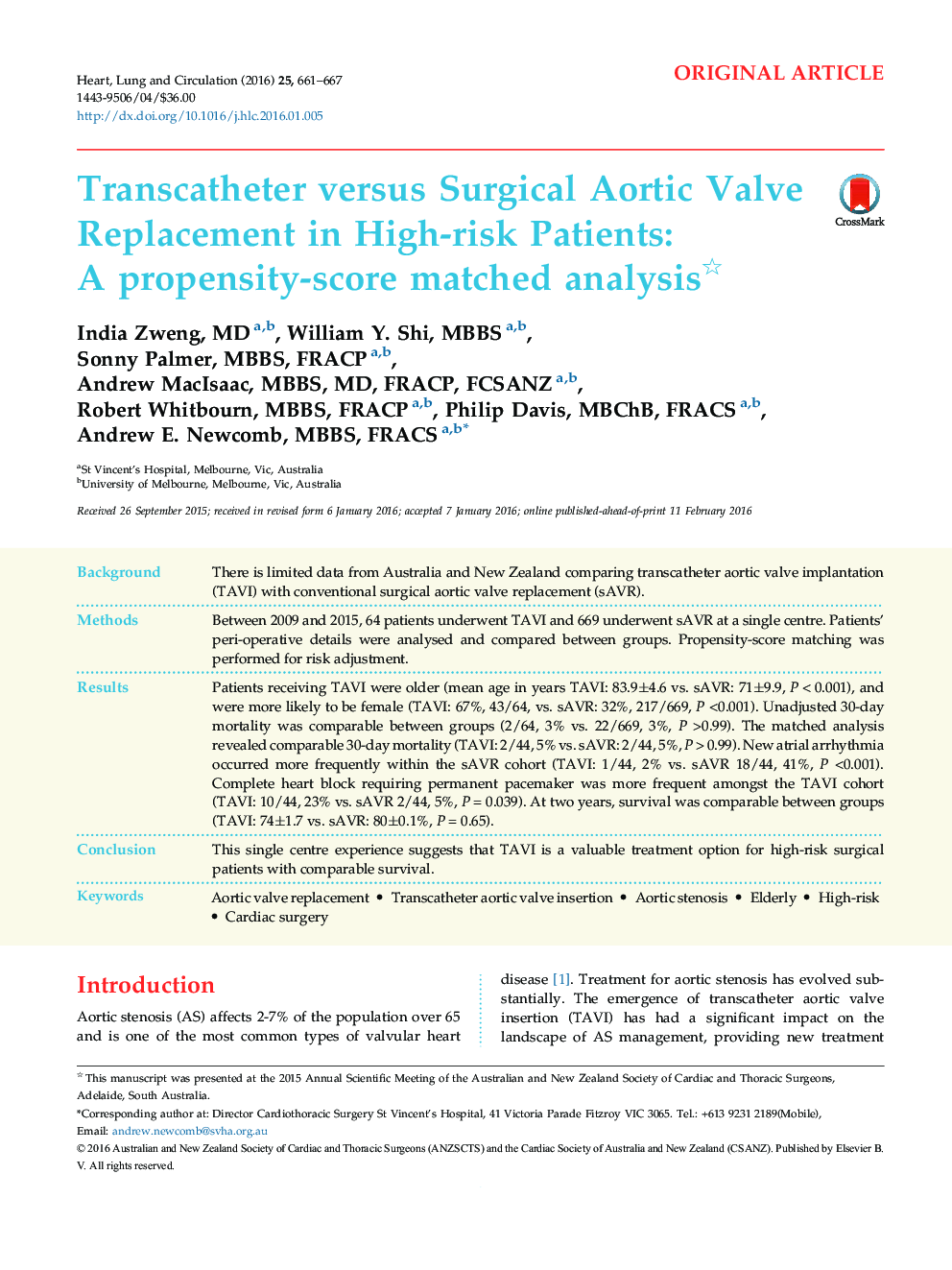| Article ID | Journal | Published Year | Pages | File Type |
|---|---|---|---|---|
| 2916596 | Heart, Lung and Circulation | 2016 | 7 Pages |
BackgroundThere is limited data from Australia and New Zealand comparing transcatheter aortic valve implantation (TAVI) with conventional surgical aortic valve replacement (sAVR).MethodsBetween 2009 and 2015, 64 patients underwent TAVI and 669 underwent sAVR at a single centre. Patients’ peri-operative details were analysed and compared between groups. Propensity-score matching was performed for risk adjustment.ResultsPatients receiving TAVI were older (mean age in years TAVI: 83.9±4.6 vs. sAVR: 71±9.9, P < 0.001), and were more likely to be female (TAVI: 67%, 43/64, vs. sAVR: 32%, 217/669, P <0.001). Unadjusted 30-day mortality was comparable between groups (2/64, 3% vs. 22/669, 3%, P >0.99). The matched analysis revealed comparable 30-day mortality (TAVI: 2/44, 5% vs. sAVR: 2/44, 5%, P > 0.99). New atrial arrhythmia occurred more frequently within the sAVR cohort (TAVI: 1/44, 2% vs. sAVR 18/44, 41%, P <0.001). Complete heart block requiring permanent pacemaker was more frequent amongst the TAVI cohort (TAVI: 10/44, 23% vs. sAVR 2/44, 5%, P = 0.039). At two years, survival was comparable between groups (TAVI: 74±1.7 vs. sAVR: 80±0.1%, P = 0.65).ConclusionThis single centre experience suggests that TAVI is a valuable treatment option for high-risk surgical patients with comparable survival.
